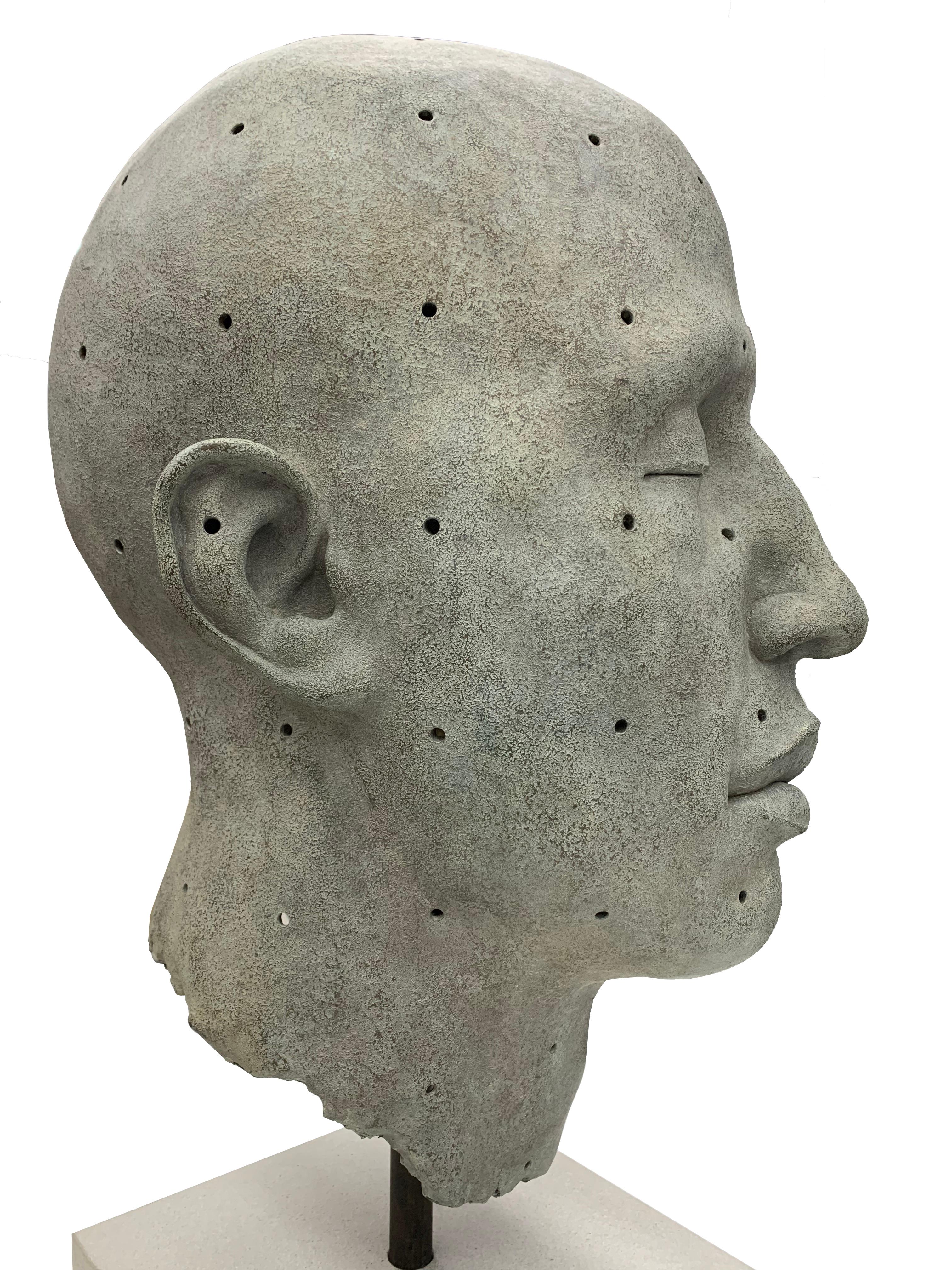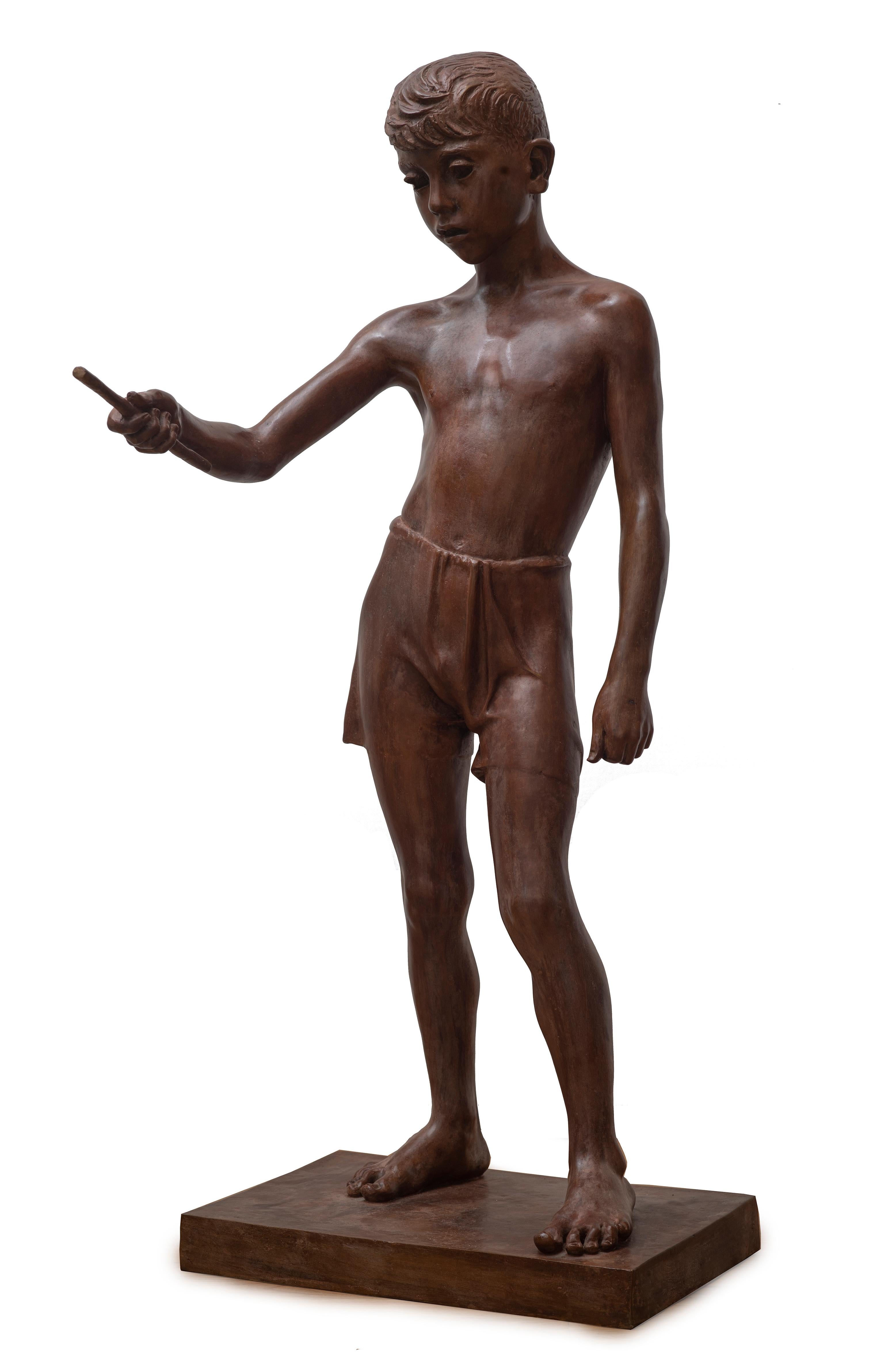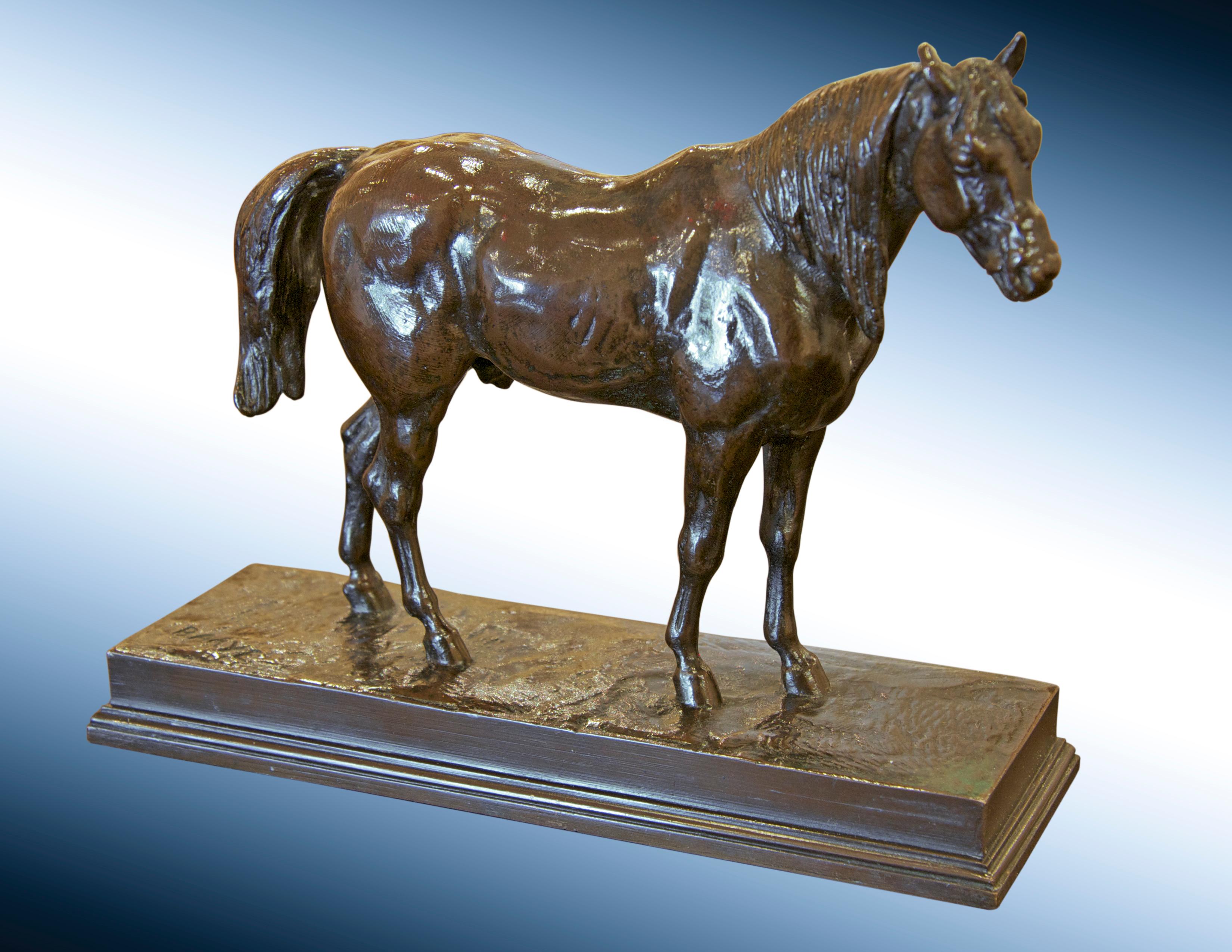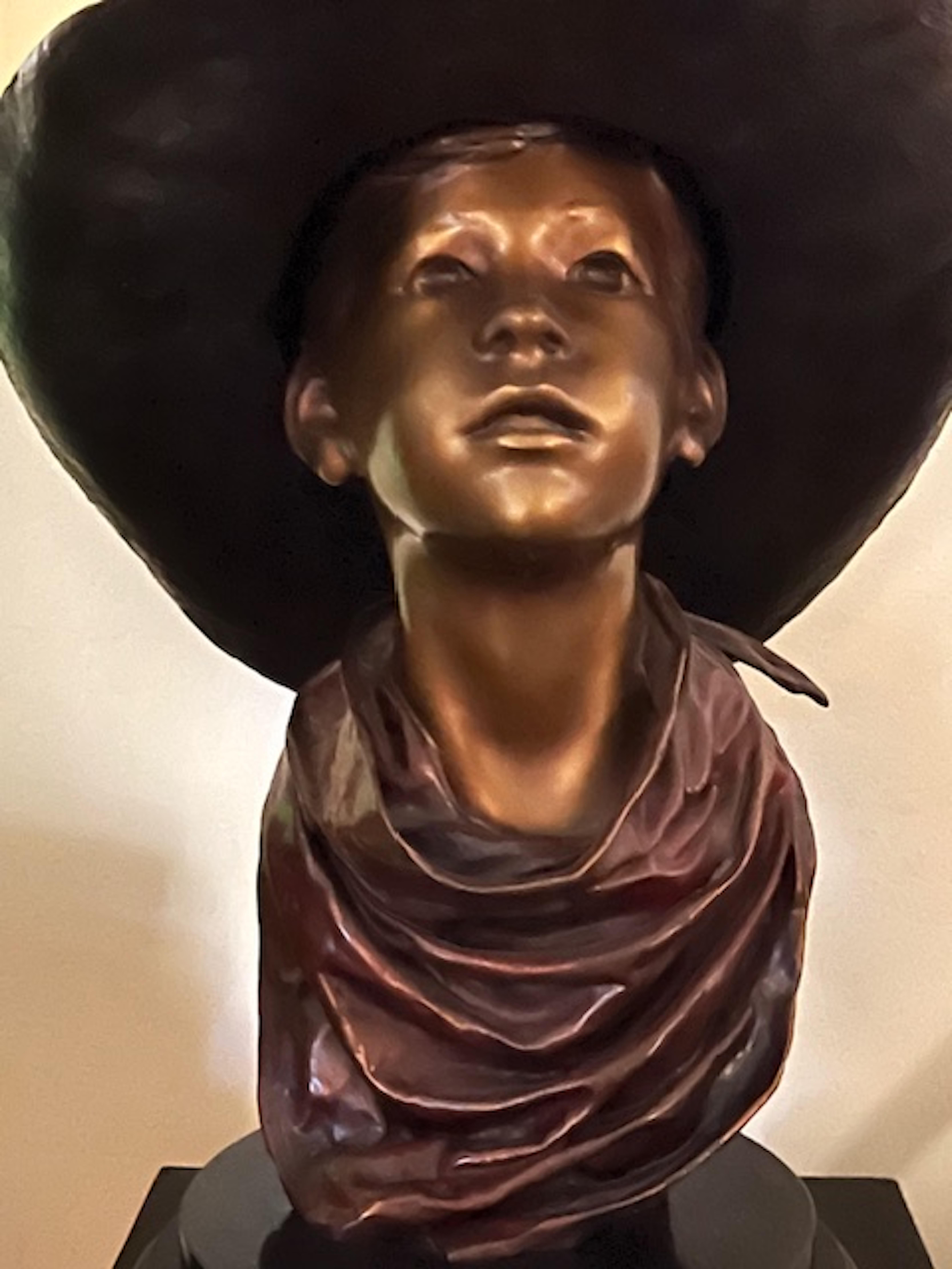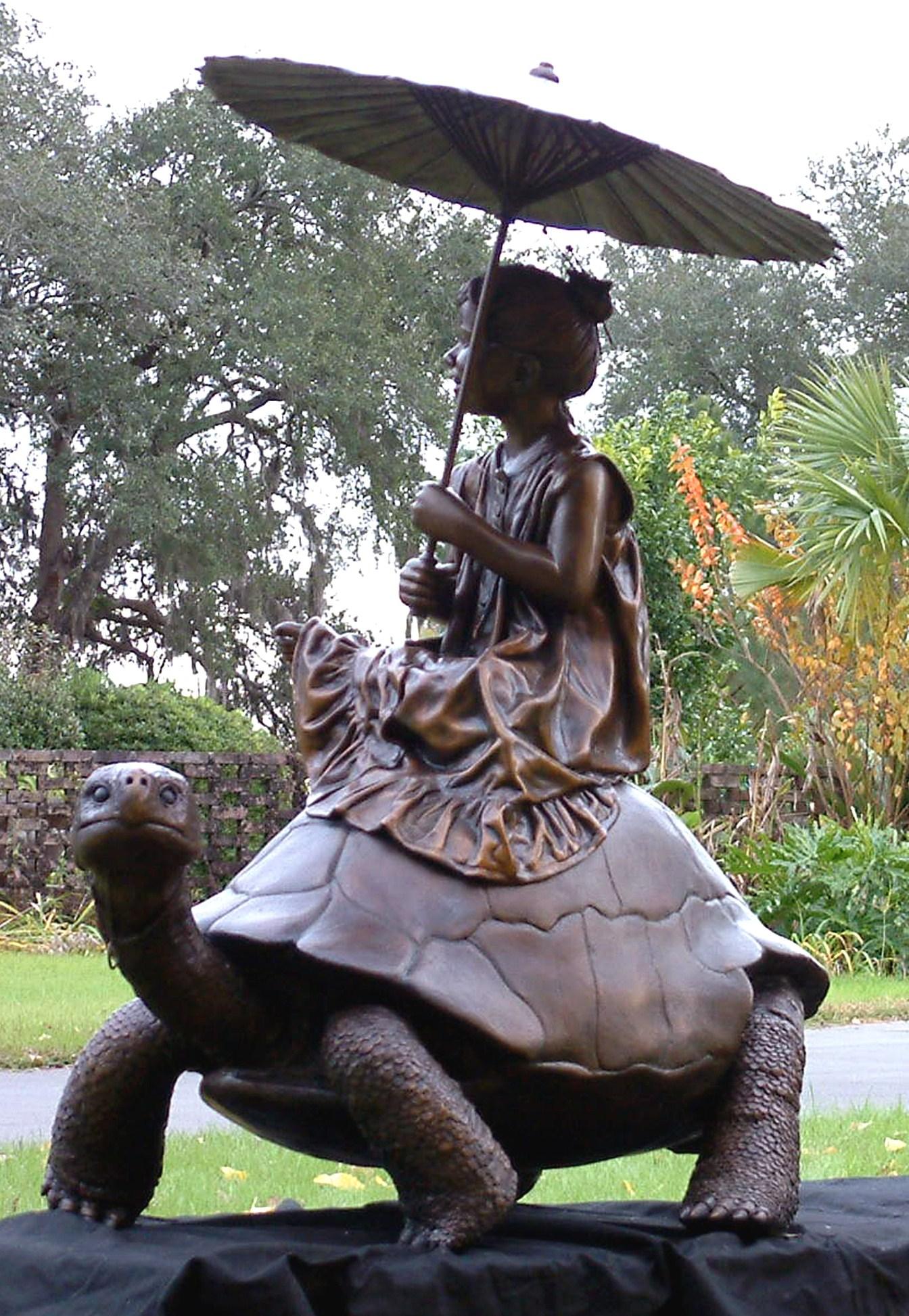Want more images or videos?
Request additional images or videos from the seller
1 of 6
Jules MoigniezMountain Goatc. 1870
c. 1870
About the Item
Jules Moigniez
"Mountain Goat"
Bronze
approx 11 x 9 x 4 inches
Signed
Jules Moigniez (1835-1894)
Jules Moigniez was born in Senlis sur L'Oise, France in 1835 and died in Saint-Martin-du-Teire, France on May 29, 1894. The son of a metal gilder, Moigniez was a student of Paul Comolera. He debuted at the Exposition Universelle in 1855 with Pointer and Pheasant and Falcon and Weasel each in plaster. He contributed regularly to the Paris Salon from 1859 to 1892 during which he exhibited over thirty sculptures including Pointer and Pheasant and Falcon and Weasel in bronze. He was awarded an honorable mention at the Salon and received a medal in London at the Great Exposition in 1862.
He lived most of his life in Paris. During his career he was widely popular in France, England and America. His bronzes were most decorative, particularly those of game birds. He also sculpted dogs, farm animals and equestrian groups. Moigniez's dogs reflected the "naturalism" style of Pierre Jules Mene. His bird sculptures were reminiscent of paintings by deHondecoeter, Casteels and Snyders. His sculptures of birds reflect dynamic movement, as if captured through a high-speed photographic portrait.
Moigniez bronzes were edited, (cast), by the foundry his father opened in 1857. A wide variety of patinations, including silver plate, golden bronze and gilding were unique to these lifetime casts. After his death, most of his bronzes were cast by A. Gouge, who also edited most of Comolera's sculptures.
Sources:
1. Dictionnaire des Peintres, Sculpteurs, Dessinateurs et Graveurs, E. Benezit, 1956;
2. Bronze Sculpture of "Les Animaliers", Jane Horswell, 1971
3. Dr. Dave Welch
- Creator:Jules Moigniez (1835 - 1894, French)
- Creation Year:c. 1870
- Dimensions:Height: 11 in (27.94 cm)Width: 10 in (25.4 cm)Depth: 4 in (10.16 cm)
- Medium:
- Movement & Style:
- Period:
- Condition:
- Gallery Location:Missouri, MO
- Reference Number:1stDibs: LU74733428543
About the Seller
5.0
Vetted Seller
These experienced sellers undergo a comprehensive evaluation by our team of in-house experts.
Established in 1970
1stDibs seller since 2017
141 sales on 1stDibs
Typical response time: 22 hours
- ShippingRetrieving quote...Ships From: Missouri, MO
- Return PolicyA return for this item may be initiated within 2 days of delivery.
More From This SellerView All
- Native American in CanoeBy Carl KaubaLocated in Missouri, MOCarl Kauba (1865-1922) "Native American in Canoe" Polychrome Bronze Signed approx 5.5 x 10 x 2.75 inches This Austrian sculptor was born in Vienna in 1865. His teachers were Karl Waschmann (1848-1905), known for his ivory sculptures and portrait plaquettes of contemporary celebrities, and Stefan Schwartz (1851-1924), who exhibited in Paris, including the Exposition Universelle of 1900 where he won a gold medal. Kauba's intricate bronzes, imported to the United States between 1895 and 1912, were cast at the Roman Bronze Works. Kauba was part of the nineteenth-century tradition of polychrome bronze sculpture. There were several types of patinas on a single statue: he could render the color of buckskin, variously tinted shirts, blankets, feathers, as well as beaded moccasins. Reportedly, Kauba came to America around 1886. Inspired by the Western tales of German author Karl May, he traveled to the West and made sketches and models. Critics, however, pointed out inaccuracies of costume and other details. For instance, the guns that his "mid-nineteenth-century" figures use are models produced after 1898. Apparently he did all of his works back in Vienna. Besides the variety of color, Kauba's bronzes show a great range of textures and his style is highly naturalistic. The sculptor loved ornament, some of which he rendered with coiled wire for reins, rope and feathers in headdresses. He successfully rendered figures in motion and often executed compositions with more than one figure. Berman (1974) illustrates non-Western subjects by Kaula, such as the pendants Where? and There (ca. 1910), a seated Scottish couple, impressive in the expressions and the details on patterned fabrics of both sitters. Another genre piece is Buster Brown...Category
Early 20th Century Realist Figurative Sculptures
MaterialsBronze
- Study AimBy Carl KaubaLocated in Missouri, MOCarl Kauba "Study Aim" c. 1920 Bronze with Brown Patina Signed approx. 9.5 x 10 x 4 This Austrian sculptor was born in Vienna in 1865. His teachers were Karl Waschmann (1848-1905), known for his ivory sculptures and portrait plaquettes of contemporary celebrities, and Stefan Schwartz (1851-1924), who exhibited in Paris, including the Exposition Universelle of 1900 where he won a gold medal. Kauba's intricate bronzes, imported to the United States between 1895 and 1912, were cast at the Roman Bronze Works. Kauba was part of the nineteenth-century tradition of polychrome bronze sculpture. There were several types of patinas on a single statue: he could render the color of buckskin, variously tinted shirts, blankets, feathers, as well as beaded moccasins. Reportedly, Kauba came to America around 1886. Inspired by the Western tales of German author Karl May, he traveled to the West and made sketches and models. Critics, however, pointed out inaccuracies of costume and other details. For instance, the guns that his "mid-nineteenth-century" figures use are models produced after 1898. Apparently he did all of his works back in Vienna. Besides the variety of color, Kauba's bronzes show a great range of textures and his style is highly naturalistic. The sculptor loved ornament, some of which he rendered with coiled wire for reins, rope and feathers in headdresses. He successfully rendered figures in motion and often executed compositions with more than one figure. Berman (1974) illustrates non-Western subjects by Kaula, such as the pendants Where? and There (ca. 1910), a seated Scottish couple, impressive in the expressions and the details on patterned fabrics of both sitters. Another genre piece is Buster Brown...Category
Early 20th Century Realist Figurative Sculptures
MaterialsBronze
- Going into BattleBy Carl KaubaLocated in Missouri, MOCarl Kauba "Going into Battle" c. 1920s Bronze with Brown Patina Signed approx 10 x 10 x 4 (including wooden base) This Austrian sculptor was born in Vienna in 1865. His teachers were Karl Waschmann (1848-1905), known for his ivory sculptures and portrait plaquettes of contemporary celebrities, and Stefan Schwartz (1851-1924), who exhibited in Paris, including the Exposition Universelle of 1900 where he won a gold medal. Kauba's intricate bronzes, imported to the United States between 1895 and 1912, were cast at the Roman Bronze Works. Kauba was part of the nineteenth-century tradition of polychrome bronze sculpture. There were several types of patinas on a single statue: he could render the color of buckskin, variously tinted shirts, blankets, feathers, as well as beaded moccasins. Reportedly, Kauba came to America around 1886. Inspired by the Western tales of German author Karl May, he traveled to the West and made sketches and models. Critics, however, pointed out inaccuracies of costume and other details. For instance, the guns that his "mid-nineteenth-century" figures use are models produced after 1898. Apparently he did all of his works back in Vienna. Besides the variety of color, Kauba's bronzes show a great range of textures and his style is highly naturalistic. The sculptor loved ornament, some of which he rendered with coiled wire for reins, rope and feathers in headdresses. He successfully rendered figures in motion and often executed compositions with more than one figure. Berman (1974) illustrates non-Western subjects by Kaula, such as the pendants Where? and There (ca. 1910), a seated Scottish couple, impressive in the expressions and the details on patterned fabrics of both sitters. Another genre piece is Buster Brown...Category
Early 20th Century Realist Figurative Sculptures
MaterialsBronze
- Chien Braque (Tom)By Pierre Jules MêneLocated in Missouri, MOPierre Jules Mene "Chien Braque" (Tom) Bronze approx. 5 x 9 x 4.25 Signed PIERRE JULES MENE (1810-1879) Pierre Jules Mene, (P. J. Mene), was born in Pa...Category
1860s Realist Figurative Sculptures
MaterialsBronze
- The Hunter and HoundBy Pierre Jules MêneLocated in Missouri, MOPierre-Jules Mene "The Hunter and Hound" (Le Valet de Limier) 1879 Bronze approx. 19 x 8 x 14 inches Signed PIERRE JULES MENE (1810-1879) Pierre...Category
1870s Realist Figurative Sculptures
MaterialsBronze
- Little Red Riding Hood InkwellBy Antoine BofillLocated in Missouri, MOAntoine Bofill "Little Red Riding Hood" Bronze Inkwell 6H x 10W x 6D Signed Inscribed: 25 Septembre 1920 Antoine Bofill was born in Barcelona i...Category
1920s Realist Figurative Sculptures
MaterialsBronze
You May Also Like
- James Mathison, Cabeza grande con huecos, 2011, Bronze, 76 x 50 x 57 cmLocated in Miami, FLJames Mathison Cabeza grande con huecos, 2011 Bronze 76 x 50 x 57 cm 29.9 x 19.6 x 22.4 in. Following the humanist tradition of sculpture, Mathison creates from diminutive to large scale pieces assessing the character, nature and qualities of different parts of the male figure and ascertaining his exact size and proportions with the use of solid materials, to render expressive and emotional works. "Having explored the visual and practical use of resin and bronze, Mathison registers his signature mark that as imprints or fingerprints, show that the passage of time has left on its surface," said Venezuelan art...Category
2010s Realist Figurative Sculptures
MaterialsBronze
- FishermanBy Francesco MessinaLocated in Roma, RMFrancesco Messina (Linguaglossa 1900 – Milan 1995), Fisherman (1930) Bronze sculpture measuring 131 x 52 x 65 cm, signed and dated 1930 on the base. Francesco Messina’s Fisherman w...Category
1930s Realist Figurative Sculptures
MaterialsBronze
- Le cheval demi-sang arabeBy Antoine-Louis BaryeLocated in Washington, DCA nineteenth-century cast of Antoine-Louis Barye's Le cheval demi-sang arabe (no. A125-Poletti; A148-Pivar), with nice patina. Poletti and Richarme, Barye: Catalogue raisonné des sc...Category
Late 19th Century Realist Figurative Sculptures
MaterialsBronze
- BANDANABy W Stanley ProctorLocated in Tallahassee, FLYoung Cowboy with Hat & Bandana. Part of Artist's Personal Collection.Category
20th Century Realist Figurative Sculptures
MaterialsBronze
- REMINGTONBy W Stanley ProctorLocated in Tallahassee, FLHas been in artist's private collection. Maquette hunting dog with training dummy.Category
21st Century and Contemporary Realist Figurative Sculptures
MaterialsBronze
- TURTLE TRAINBy W Stanley ProctorLocated in Tallahassee, FLLife size child on life size tortoise. Combination of young child's imagination and reality.Category
21st Century and Contemporary Realist Figurative Sculptures
MaterialsBronze
